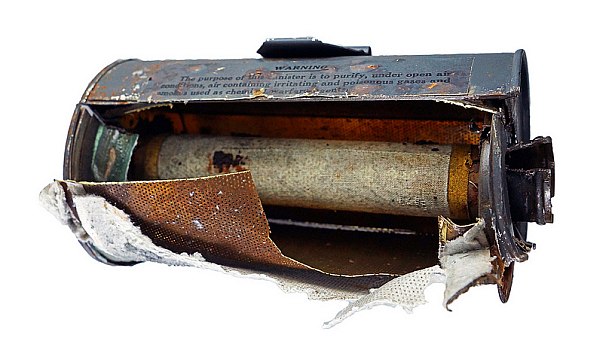Asbestos is a mineral that occurs naturally in the environment. It is composed of thin threads that are highly resistant to heat, fire and chemicals, and it is also non-conductive. These properties made asbestos a popular choice in building materials not just in the 20th century, but throughout history – even as far back as Roman times. However, it was with the industrial revolution that the use and manufacture of asbestos products became widespread.
One area where asbestos saw a lot of use was in the military.
Military Use of Asbestos
All branches of the military have used asbestos in one form or another, it was most prevalent in the Navy, where it was widely used in many aspects of ship construction and repair. It was also used extensively in airplanes, as well as in the barracks, mess halls, and other buildings on the bases.
The military stopped using asbestos in the 70s, but there are still buildings, ships and planes that could contain it. The military is aware of the asbestos exposure in the Navy, and other branches of the armed forces. The military is also aware that veterans from recent wars in the Middle East could also be at greater risk for exposure because asbestos is prevalent in that region and could have been released into the air from damaged buildings.
The Effects of Asbestos Exposure
The effects of the asbestos depends on the level and duration of exposure. Generally, a short, one-time event is not likely to have lasting health effects. However, prolonged exposure, over a period of months or years, can be very damaging and can cause serious health conditions including:
- Asbestosis – scarring on the lungs;
- Lung cancer; and,
- Mesothelioma – a cancer that affects the membranes surrounding the lungs and other organs.
Asbestos exposure can also cause a condition called pelural plaque; where the membranes surrounding the lungs and organs to thicken and harden, and impair organ function.
Many of the health conditions caused by asbestos exposure can take years to develop, and many people don’t start exhibiting symptoms until long after they have left the area of exposure.
What to do if You are Exposed
Short-Term Exposure
As previously stated, a short one-time exposure should not pose significant health risks; however, you should still notify your physician so that he can log the date and circumstance surrounding your exposure.
If you believed that you were exposed in the workplace, you should alert your employer immediately.
- If you work in a place that manufacturers asbestos materials, there should be protocols in place to prevent exposure and your employer should review those protocols to ensure that they are effective.
- If you work in an old office building, and your company is remodeling, your employer should have already had the area tested for asbestos, and have protocols in place that prevent dust from getting into occupied areas.
- If you work in an old office building that is in a state of disrepair, and you encounter a broken piece of flooring, ceiling, or wallboard, your employer should contact professionals to test the broken materials for asbestos.
If you believe that you were exposed at home, such as from handling old construction or insulation materials, contact your local department of health. You should also consider vacating the premises until the material can be tested and, if necessary, professionally removed.
Here are some images of items commonly found in homes and public buildings, which may contain asbestos.
On-Going Exposure
If you believe that you were continually exposed to asbestos at your home or at your place of work, you should first consult with your doctor. If you don’t have any symptoms of asbestos-related illnesses, your doctor might be able to perform diagnostic scans, such as X-rays, to detect any signs of disease in your lungs and surrounding tissues.
Asbestos fibers will not show up on most screening tests, so if you have no symptoms and the test does not show any presence of disease, the best your doctor can do is monitor your condition and test you regularly to see if your condition changes.
If you are experiencing symptoms, and a diagnostic scan confirms the presence of an asbestos-related disease, you need to begin treatment as quickly as possible. Many of these diseases could be present for years before they produce severe enough symptoms for someone to seek medical attention. This is why it’s important to get treatment as soon as possible after diagnosis.
You should also consult with an attorney to determine if you are eligible for any compensation, especially if you believe that you were exposed on the job. There are currently several class action suits and mass tort suits against the asbestos industry, seeking compensation for the damage asbestos has caused to the victims of exposure and their families.




Very scary isn’t it heard of asbestos is dangerous and can kill. Some countries still producing and using it like China, Brazil and Russia. Asbestos still exist in our environment , same as danger was near us.
Once I found out how old my home is, I started to suspect that it might have asbestos in the insulation. The information you posted about what to do if I’m exposed will help to keep me as safe as possible after being exposed. So far, the different areas of my house doesn’t have any exposed or broken flooring or drywall, so I should call a professional service to inspect my house in case it has any asbestos that needs to be removed. Thanks for the information!